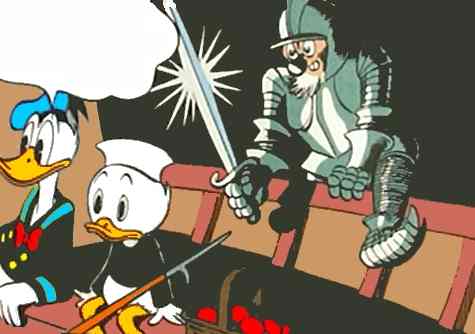 |
|
FC0159
Ghost of the Grotto - 1947 Synopsis:
Donald and the nephews are stranded on a
coral reef with an old Spanish galleon. But the
barren reef is inhabited - by a man in ancient
armour.
Comments:
Barks worked very hard on this story and
with such dedication it is no wonder that he
liked the result. It is interesting to know
that it was his wife Garé's favorite story, because, as she said: 'It's
got pathos'.
Barks' comments:
I can remember the first idea I had on that was
just trying to figure out something Donald could
do. I thought of him sailing boats and came up
with a potential ten pages of gathering seaweed,
and selling this kelp, which would give me a lot
of gags with boats. I think of a scene, a locale,
and think, 'Well, I feel in the mood to draw
boats, and the ocean, and so on,' and that would
cause me to start working on that particular type
of story. As I developed more and more things
with the story, I think it's quite possible that
that 'Ghost of the Grotto' was brought in as a
menace. There is so much in that, I couldn't have
thought of it in a whole bucketful of writing at
once. It had to come out one thing after another.
|